Adriacom I Business Services & Immigration
Montenegro Awaits - Let's Make it Yours.
Kotor History
The inevitable charm and mesmerizing beauty of Kotor’s Old Town lies in its long and rich history. Originally called Acruvium, the city was first mentioned in 168 BC, as part of the Roman province of Dalmatia but was likely settled already in the 5th century BC by Illyrian tribes. From the outset, it has been protected by the Kotor City Walls since the early Middle Ages.
Its sheltered geographic location within the Bay of Kotor helped immensely in the swift development of a successful maritime trading hub. After the fall of the Western Roman Empire in 476 AD, barabrian invasions became more frequent and then-Emperor Justinian the Great erected Kotor Fortress in 535 AD to protect the city from being plundered.
Table of Contents
ToggleSimilar to Dubrovnik, Kotor has established itself as an independent and influential city-state in the province of Byzantine Dalmatia, capitalizing on being at the intersection of the maritime trading routes between the Venetian and Ottoman Empires.

Kotor City Walls
The Kotor City Walls stretch completely around Kotor’s Old Town, a distance totaling 4,5 kilometers, and also include five bastions, a fortress, and 3 city gates.

Kotor Fortress
Kotor Fortress towers 260 meters above the old town and is a major tourist attraction. No visit to Kotor is complete without a hike up to enjoy the picture-perfect panorama.
Serbian Rule over Kotor
Kotor managed to remain independent for most of the early High Middle Ages (1,000 – 1,185), allied only loosely to the city-state of Dubrovnik. As time progressed, the Medieval Serbian State under the Nemanjic Dynasty became a Balkan force to be reckoned with, subduing the city of Kotor in 1,185 but granting it city status under the Serbian Monarch.
Kotor was valued as a safe harbor and indispensable trading port by the Serbs, and towards the end of the Middle Ages, Kotor’s growing maritime significance meant that it had become one of the main competitors to neighboring Dubrovnik (then called the Republic of Ragusa) for the Eastern Adriatic waterways.
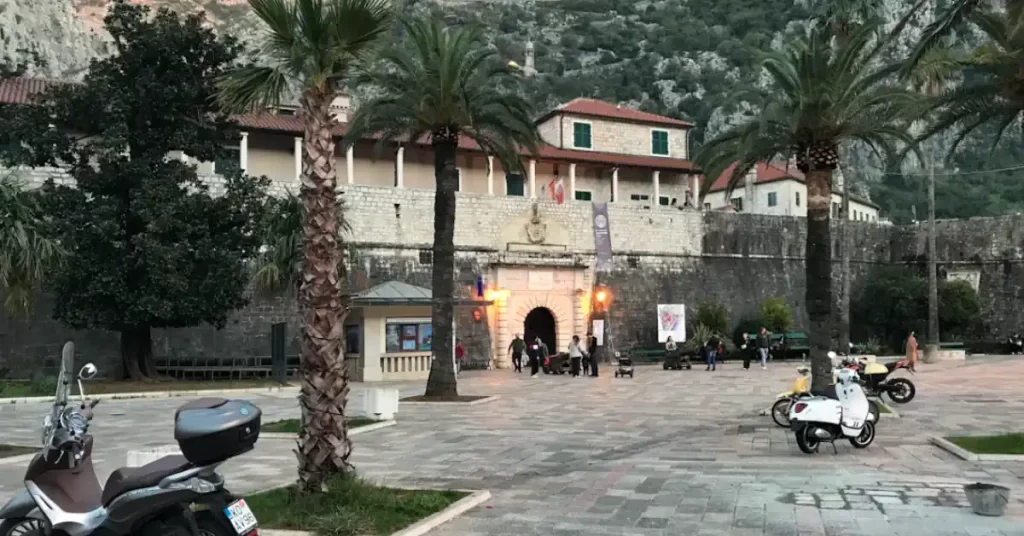
Kotor
Discover the best of beautiful Kotor, one of the most authentic and well-preserved historic locations in Montenegro that is listed as a UNESCO World Heritage site.
When the Serbian Empire collapsed in 1371, the Kingdoms of Hungary and Bosnia took advantage of the situation and ruled over Kotor for short stints: Hungary from 1371 – 1384 and Bosnia from 1384 – 1391. Kotor regained independence in 1391 and remained free until 1420 when it joined forces with the Venetian Empire, a benevolent move to protect itself from the lurking fear of Ottoman occupation.
You can still see architectural testaments to Kotor’s epoch as a sovereign city-state and the ensuing Serbian Rule in the 12th-century St. Tryphon Cathedral (1166), the Church of St. Luke (1195), St. Anne’s Church (13th century), the Church of St. Mary (1221), and the Church of St. Michael.

Kotor Cathedral
Discover Kotor Cathedral, one of the most prominent landmarks in the old town of Kotor and flanked by two asymmetrical bell towers.
Venetian Rule over Kotor
Kotor’s era of true affluence and cultural prosperity began with the Venetian Rule that lasted almost four centuries (1420 – 1797) and it was during this period that the city thrived through expansive maritime commerce within the Venetian trading network. Many of the city’s well-preserved architectural landmarks bear witness to this flourishing epoch.
Most of the non-religious buildings in Kotor’s Old Town are heavily influenced by Venetian Baroque architecture. Wealthy families built grand merchant residences such as the Lombardic Palace, the Grubonja Palace, and the Grgurina Palace. Unfortunately, only a few Renaissance buildings survived the devastating earthquake of 1667.
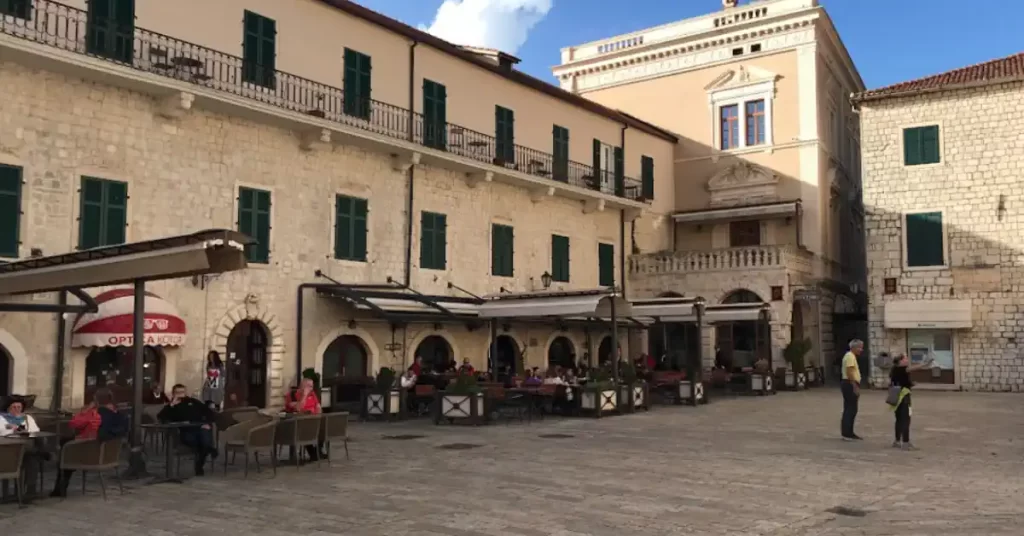
Kotor Old Town
Take a stroll along the cobblestone streets of Kotor’s Old Town for a sense of history and Adriatic coastal charm. Dine alfresco on a stylish terrace and enjoy the atmosphere.
Kotor’s City Walls (locally called “Kotorski bedemi”) in its current form were mostly built during the Venetian period, to protect the city from pirates and hostile Empires, especially the Ottomans. The city walls are enormous, measuring 4,5 kilometers, and are fortified by five bastions, including the Kampana Tower, and Kotor Fortress which towers 260 meters above the historic center.
These Venetian Works of Defense can be accessed through three 16th-century city gates (the Sea Gate on the western sea-facing side, the southern Gurdic Gate, and the Nothern Gate) and are listed as a UNESCO World Heritage Site. The Venetian Lion of Saint Mark is depicted on a large panel close to the main city gate.
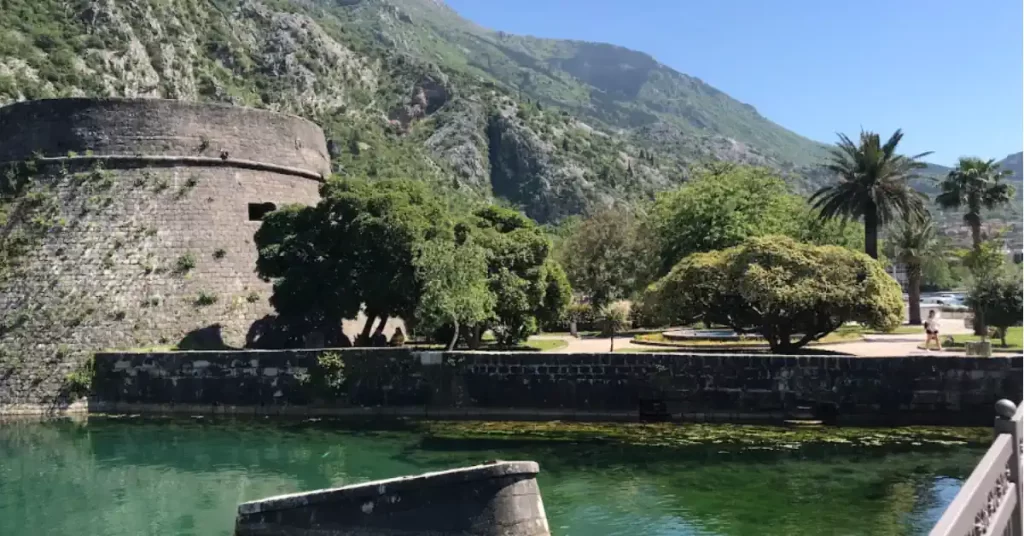
The Kampana Tower
The bulky Kampana Tower anchors the northern to the western city walls and is one of the most prominent features of Kotor’s city silhouette.
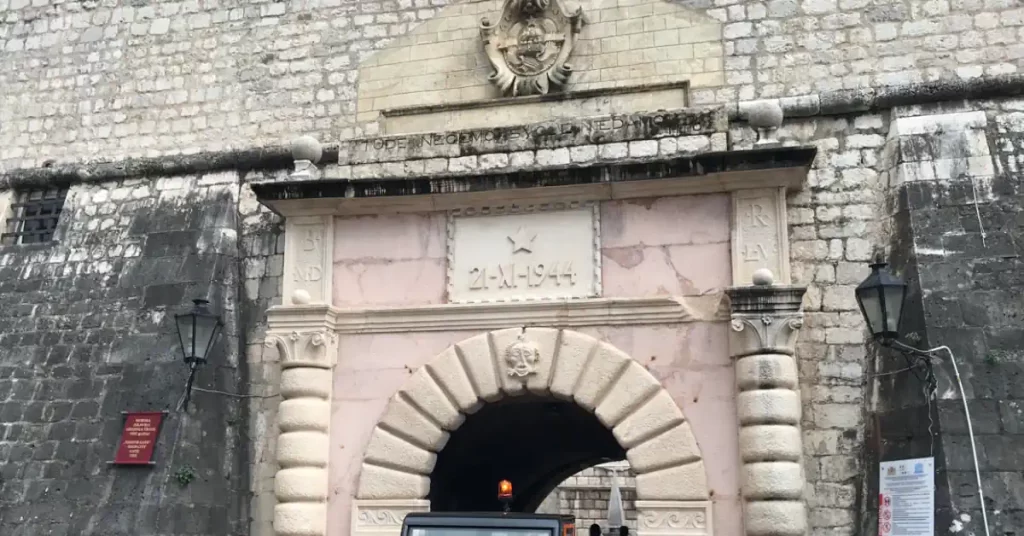
Sea Gate Kotor
The Sea Gate Kotor (also known as the ‘Main Gate’) was built in 1555 and is the primary entrance to Kotor’s Old Town. It boasts an eclectic mixture of styles and designs.
Habsburg’s and Napoleon’s Rule over Kotor
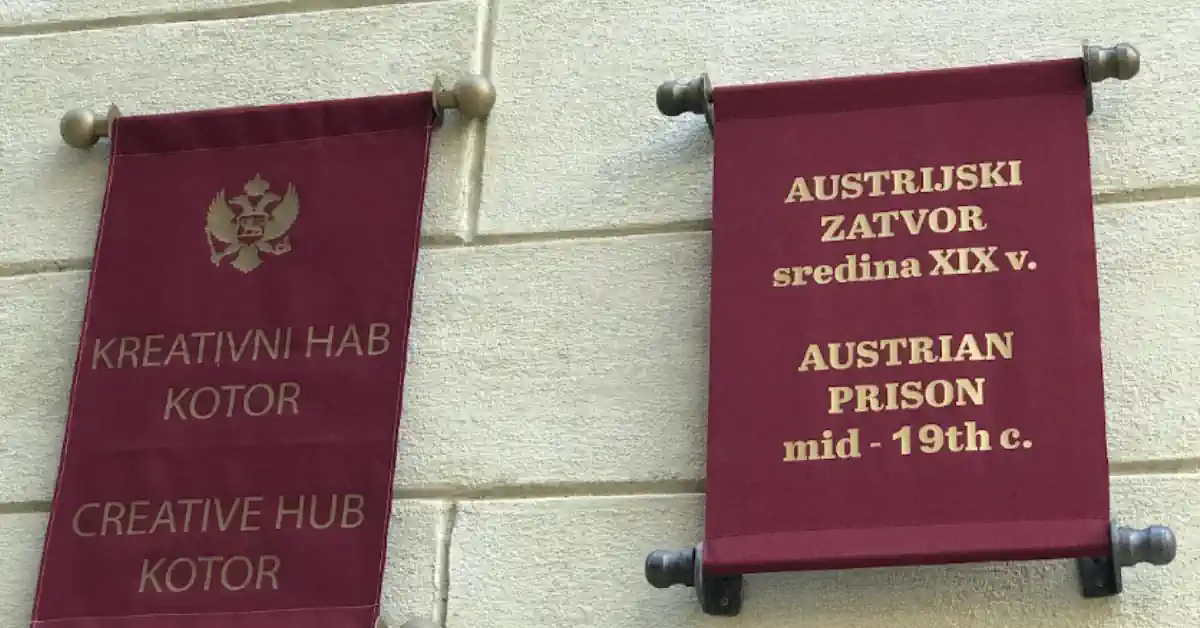
The decline of the Adriatic and wider Mediterranean Basin as a maritime trading center meant that Kotor, like nearby Venice-controlled ports, entered a phase of gradual decline. The Treaty of Campo Formio foresaw the partitioning of the Venetian Republic between the rising Austrian and French Empires.
The period between 1797 and 1814 saw Kotor changing hands among Austria and France through several treaties and congresses. For more than 100 years (from 1814 to 1918), Kotor was ruled by the Austrian Empire (later Austria-Hungary) as a crown land of its Kingdom of Dalmatia.
Cattaro as it was known back then, served as one of the main naval bases of the Austro-Hungarian Navy. It was home to the Fifth Fleet, including many Austrian and German submarines during the First World War. After the end of WW I in 1918, the city joined Yugoslavia (Kingdom of Serbs, Croats, and Slovenes) and officially became known as Kotor.
A century of Habsburg Rule has left behind an imposing score of defensive fortifications such as Fort Gorazda and Fort Vrmac which sit on the ridge between Kotor and Tivat, guarding the entrance to the inner part of the Bay of Kotor. The Austrians also built the Kotor Serpentine Road and the Kotor-Cetinje cable car which did not survive the aftermath of World War I.

Fort Gorazda
Built at the end of the 19th century, Fort Gorazda is a testament to Austro-Hungarian military prowess. It stands on a hillside above Kotor and is freely accessible.
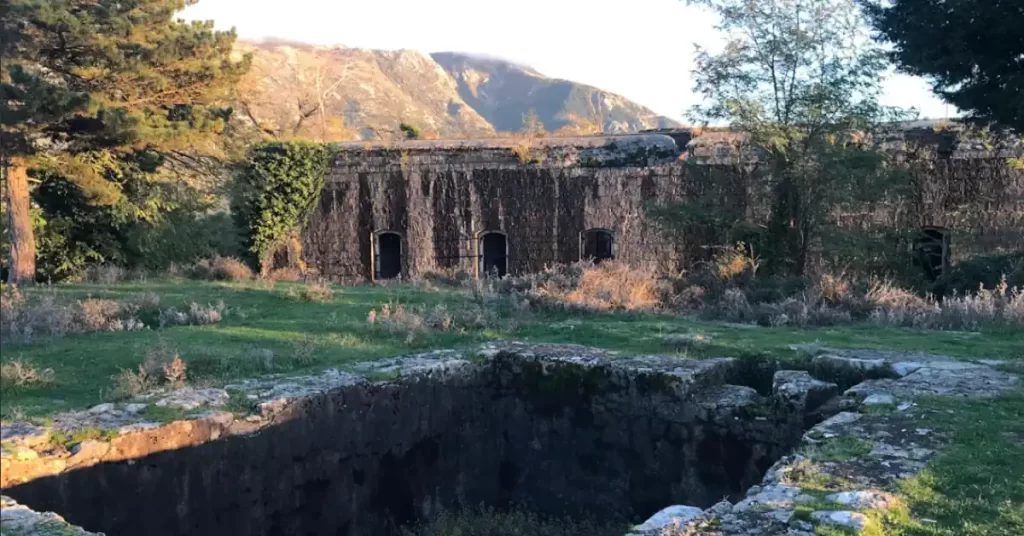
Fort Vrmac
Fort Vrmac guards the entry to the Bay of Kotor, sitting at an altitude of 475 meters above sea level on the Vrmac Ridge between Kotor and Tivat.
Recent History & Start of Tourism
Kotor was occupied during World War II (from 1941 to 1944) by Fascist Italy and Nazi Germany and then got liberated by Yugoslav Partisans on November 21st, 1944 – the date is inscribed on a stone plaque above the entrance to the main Sea Gate. After World War II, Montenegro became one of the constituent republics of the Socialist Federal Republic of Yugoslavia (SFRJ).
The leisure industry in Kotor has a long history. It is not exactly known when the first hotel opened but by 1860 the charming coastal city already had three hotels and was connected via ferry route to Trieste, Italy – and thus to Western Europe. Cruise tourism was already a thing here in the 1920s with several cruise companies listing Kotor as a destination.
Kotor’s popularity as a tourist destination grew steadily in the decades following World War II and it was added to the UNESCO World Heritage list in 1979 together with Dubrovnik. Ever since the tourism sector has played a major role in the local economy, employing thousands of people and allowing new hotel developments; and many of the old stone houses have been turned into boutique hotels. Annually almost 500 cruise ships visit Kotor’s Old Town.